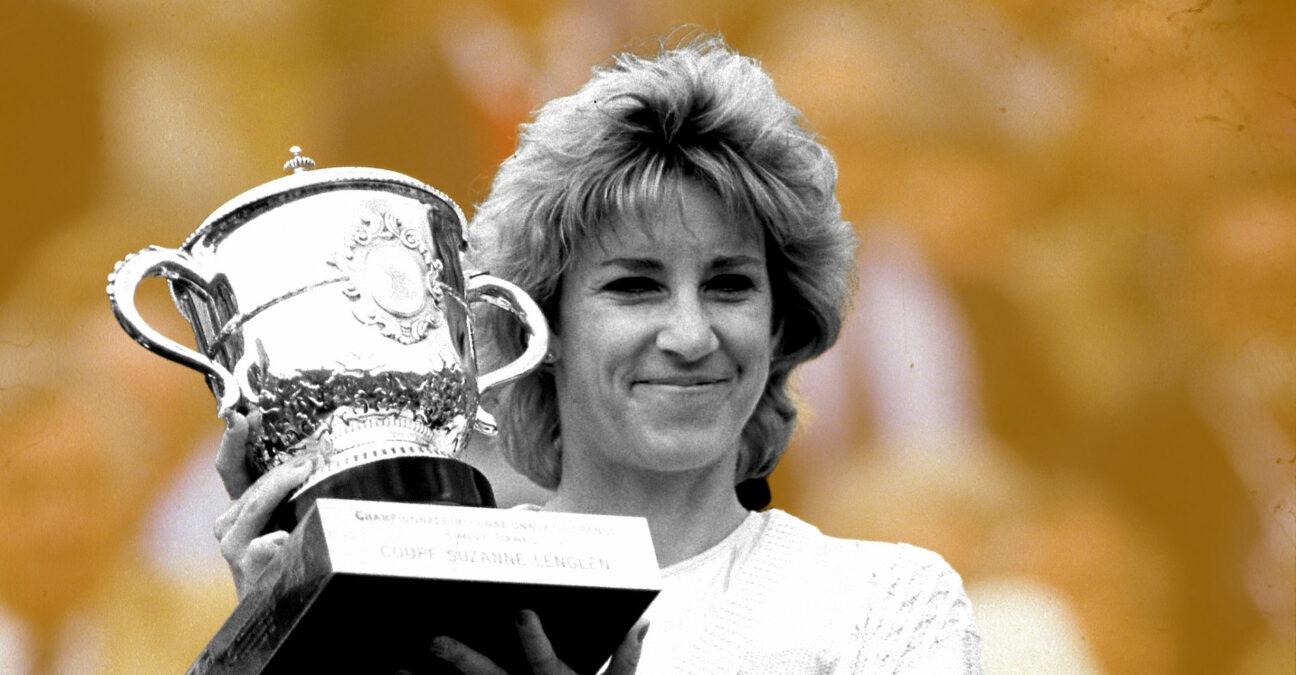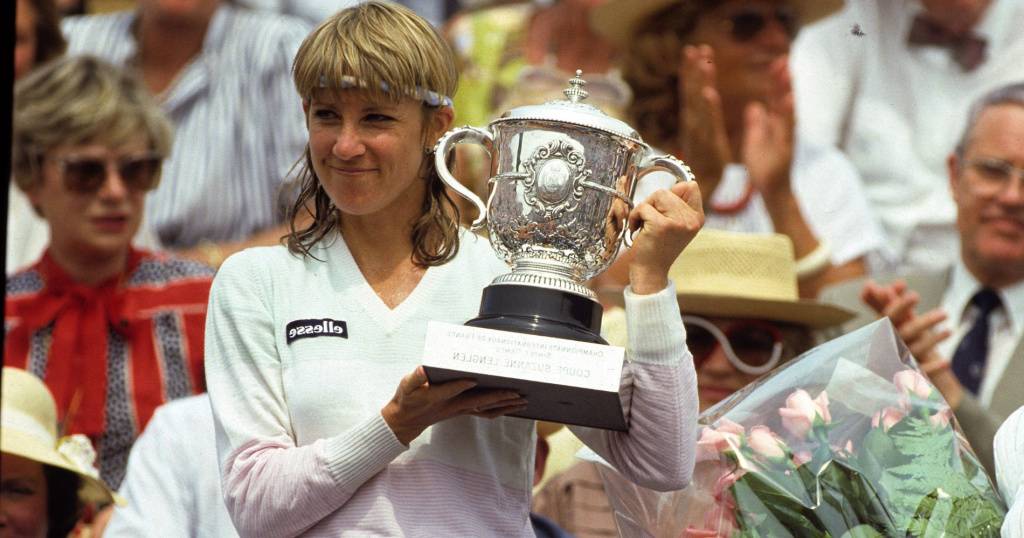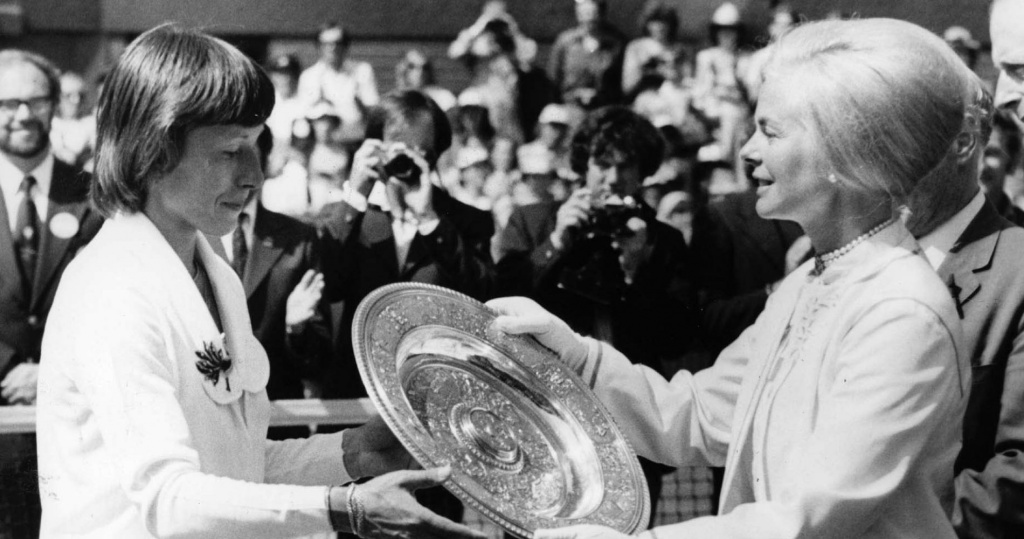June 7, 1986: The day Chris Evert won Roland-Garros for the seventh time
Every day, Tennis Majors takes you back in time to relive a tennis event which happened on this specific day. On June 7, 1986, Chris Evert defeated Martina Navratilova to win Roland-Garros for a record-extending seventh time
 Chris Evert at Roland-Garros in 1986
Chris Evert at Roland-Garros in 1986
What happened exactly on that day?
On this day, June 7, 1986, Chris Evert won Roland-Garros for the seventh time, improving the all-time record that she already held since 1985 in Paris with six titles. This success put her two titles ahead of the previous record holder, Margaret Court. To achieve that feat, Evert defeated her rival Martina Navratilova in the final, 2-6, 6-3, 6-3. Since then, the closest any female player got to that record was Steffi Graf, who triumphed six times at Roland-Garros.
The players involved: Chris Evert and Martina Navratilova
- Chris Evert: the queen of clay courts

Chris Evert was born in 1954 in Florida. Coached by her father, she developed a game based on consistency, keeping her opponents away from the net with her deep groundstrokes, and punishing them with great passing shots if they approached the net carelessly. She obtained her first remarkable result at the age of 16, reaching the semi-final at the US Open (defeated by world No 1, Billie Jean King, 6-3, 6-2). The list of her achievements in the 19 following years is more than impressive. In her entire career, Evert reached the final four in 52 of the 56 Grand Slam tournaments she entered. She played 33 major finals, claiming no less than 17 Grand Slam titles: Roland-Garros (1974, 1975, 1979, 1980, 1983, and 1985), Wimbledon (1974, 1976, 1981), the US Open (1975 to 1978, 1980, 1982), and the Australian Open (1982, 1984). She only competed six times in Melbourne, and she skipped Roland-Garros three times (1976-1978) at a time when she was unbeatable on clay: she completed a winning streak of 125 matches on clay court, between 1973 and 1979. Having claimed a total of 143 singles titles at the time, Evert finished seven seasons as world No 1 (1974, 1975, 1976, 1977, 1978, 1980, and 1981), and since 1972, she had never left the top 3.
- Martina Navratilova: the player who revolutionalised women’s tennis
In June 1986, Martina Navratilova, born in 1956, was world No 1. According to her rival Chris Evert, she took physical fitness to a whole new level in women’s tennis, introducing the idea of cross-training, playing other sports such as basketball in order to improve her physical condition. She reached the top spot for the first time in 1978, after she claimed her first Grand Slam title at Wimbledon, defeating Evert in the final (2-6, 6-4, 7-5).

She successfully defended her crown at the All England Club in 1979, and in 1981, she triumphed for the first time at the Australian Open, each time defeating Evert in the final. In those years, she fought for the world No 1 spot with Evert and Tracy Austin, but from 1982, Navratilova took a strong hold on the tour. That year, she completed the career Grand Slam by lifting the trophy at both Roland-Garros (defeating Andrea Jaeger, 7-6, 6-1) and Wimbledon (defeating Evert, 6-1, 3-6, 6-2). In 1983, her hold on the tour changed into a complete domination. When she arrived at the 1984 Australian Open, she had won the last six Grand Slam tournaments (from Wimbledon 1983 to the 1984 US Open), which was an absolute record on both the men and women’s tour. However, at the Australian Open, she missed the opportunity to achieve a calendar-year Grand Slam. In 1985, Navratilova lost one of the greatest Roland-Garros finals of all-time (defeated by Chris Evert, 6-3, 6-7, 7-5), whom she defeated a few weeks later in the Wimbledon final (4-6, 6-3, 6-2), claiming her sixth crown in London. She was then defeated in the US Open final by Hana Mandlikova (7-6, 1-6, 7-6), but, after having triumphed at the Australian Open in December, she finished the year as the No 1 once again, and still held that spot when Roland-Garros began.
The place: Stade Roland-Garros
The story took place in Roland-Garros, Paris. The stadium, located in the west of Paris at the edge of the Bois de Boulogne forest, had been hosting the French Grand Slam since 1928. It was the first and now the only Grand Slam to be played on clay, the slowest surface, which made it the hardest tournament to win from a physical perspective. It was Chris Evert’s favourite surface, while Navratilova’s serve-and-volley game was more vulnerable than anywhere else, although she had won the tournament twice.
The facts: Evert wins 18th Grand Slam title in three sets
The 1986 Roland-Garros final was the 69th meeting between Chris Evert and Martina Navratilova in their incredible rivalry. These two amazing champions had dominated the game in the last decade, but in recent years, Navratilova had taken the edge on their rivalry, prevailing in 18 of their last 20 matches. However, the last time she lost against Evert was, in fact, on Roland-Garros’ Center Court, in the final of the 1985 edition, in one of the most iconic finals in the tournament’s history (6-3, 6-7, 7-5). On clay, Evert’s baseline game was always more threatening than on fast surfaces, and it would have been bold to pick up a favourite for this final.
Evert, who, at the time, was still known as Mrs Lloyd, got off to a very slow start. She didn’t hit a single winner in the first three games, and struggled with her serve (five double-faults). Even her legendary footwork seemed to have let her down, and she logically lost the set, 6-2.
However, she began the second set with a cross-court forehand passing shot which seemed to give her the confidence she lacked in the first set. To reverse the scenario, the five-time defending champion used a shot that she had recently added to her weaponry. ”Today, when she pulled me wide on the forehand, I was able to get topspin on the ball and loop it to her backhand,” she explained, according to The New York Times.
Navratilova now started to struggle with her own serve on that windy day. The defending champion won the second set, 6-3, and she now seemed to have complete control over the match. In an interesting turn of events, it was now Evert who was winning points at the net, and she even sealed her victory on a magnificent drop volley.
For the first time in 12 months, Evert had managed to defeat Navratilova. She had also claimed her 18th Grand Slam title, the seventh at Roland-Garros, beating her own record of being the most successful female player in the tournament’s history.
What next?
Evert’s triumph at Roland-Garros in 1986 would remain her last major title. She would never reach another Grand Slam final afterwards. She would retire from professional tennis at the end of 1989, finishing her career on a win over young Conchita Martinez (6-3, 6-2), in the Fed Cup (now known as Billie Jean King Cup) final.
Martina Navratilova would become, according to Billie Jean King, “the greatest singles, doubles, and mixed doubles player who ever lived”. In the Open Era, no male or female player would ever win more singles tournaments than Navratilova (167), doubles events (177), or matches (2,189). At the end of her career, she would hold 18 Grand Slam titles in singles, 31 in doubles and 10 in mixed doubles, completing the career boxed Grand Slam: winning every major tournament in singles, doubles and mixed doubles. She would spend a total of 332 weeks as world No 1, but she would never achieve the calendar-year Grand Slam.
In total, Evert and Navratilova would face no less than 80 times, Navratilova leading 43-37.








